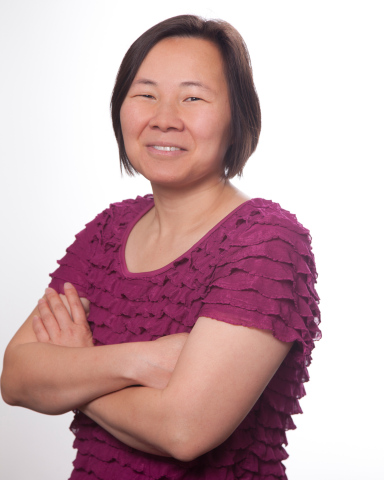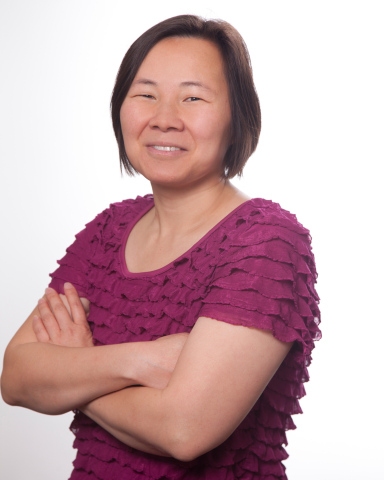STANFORD, Calif.--(BUSINESS WIRE)--Maintaining good sleep can be particularly challenging for children. Each season brings inevitable schedule changes, from spring sports to summer vacation to back-to-school and more. Nanci Yuan, MD, medical director of the Sleep Center at Lucile Packard Children's Hospital Stanford and a clinical associate professor of pediatrics at the Stanford School of Medicine, answered questions and provided tips about the basics of pediatric sleep schedules.
What advice do you give parents needing to adjust their child’s sleep schedule for seasonal changes?
The best approach is to be proactive. Make sure the child is getting good, quality sleep before their sleep schedule needs adjusting. If you're already not refreshed and then you have to wake up an hour earlier or later, you're going to become even more sleep-deprived.
Most infants under the age of 6 months sleep on their own schedule, so changes do not affect them per se. But for older infants, toddlers and young children with set nap and nighttime schedules, you can ease them into time changes by slowly moving their regular timed sleep in 15- to 30-minute increments. So, if their nap usually happens at noon and nocturnal sleep at 8 p.m., then move them to 11:45 a.m. and 7:45 p.m., respectively, and keep adjusting gradually prior to the time change.
Generally speaking, what message should parents receive about maintaining healthy sleep for their kids?
They should know that getting good, quality sleep is as important as a healthy diet and exercise. Teaching kids good sleep habits is essential -- good sleep habits established in childhood should carry a person through their lifetime.
What are the consequences of not getting enough sleep?
Sleep deprivation is known to cause emotional and cognitive issues, and these can affect the child and the caregivers. With older children, the impact often plays out in school: poor concentration, disciplinary problems, drowsy driving among teens – even poor diet. Studies have shown that as few as 8 percent of high school students get enough sleep on weeknights, and many have irregular sleep patterns, too.
Any advice about digital devices and pediatric sleep?
Parents should ensure that a child does not have exposure to an electronic device at least one hour, at minimum, before sleep time. In addition to stimulating the brain when it should be resting, electronic devices emit light that can affect the circadian clock and suppress the secretion of melatonin, a hormone made by the body, which helps promote sleep.
How about a question for the new parents? What's the most common question you're asked by moms and dads with infants in the house?
"What's normal sleep for my baby?" The range for normal sleep depends on the age of the child, and is divided between nighttime sleep and naps. This could be anywhere from 11-18 hours over a 24-hour period, generally speaking. It's a big range when you’re that young.
What should a parent do if there are concerns about a child’s sleep?
Speak to a pediatrician. If problems persist or additional information is needed, parents should then seek help from a pediatric sleep specialist.
The Pediatric Sleep Center at Stanford Children’s Health is located at 2490 Hospital Drive, Suite 305, Mountain View, CA, 94040. Phone 650-498-7670.
About Stanford Children’s Health and Lucile Packard Children’s Hospital Stanford
Stanford Children’s Health, with Lucile Packard Children’s Hospital Stanford at its core, is an internationally recognized leader in world-class, nurturing care and extraordinary outcomes in every pediatric and obstetric specialty from the routine to rare, for every child and pregnant woman. Together with our Stanford Medicine physicians, nurses, and staff, we deliver this innovative care and research through partnerships, collaborations, outreach, specialty clinics and primary care practices at more than 100 locations in the U.S. western region. As a non-profit, we are committed to supporting our community – from caring for uninsured or underinsured kids, homeless teens and pregnant moms, to helping re-establish school nurse positions in local schools. Learn more about our full range of preeminent programs and network of care at stanfordchildrens.org, and on our Healthier, Happy Lives blog. Join us on Facebook, Twitter, LinkedIn, and YouTube.
Lucile Packard Children’s Hospital Stanford is the heart of Stanford Children’s Health, and is one of the nation’s top hospitals for the care of children and expectant mothers. We are the only children’s hospital in Northern California with specialty programs ranked in the U.S. News & World Report Top 10 for 2013-14, and the only hospital in Northern California to receive the national 2013 Leapfrog Group Top Children’s Hospital award for quality and patient care safety. Discover more at stanfordchildrens.org.




